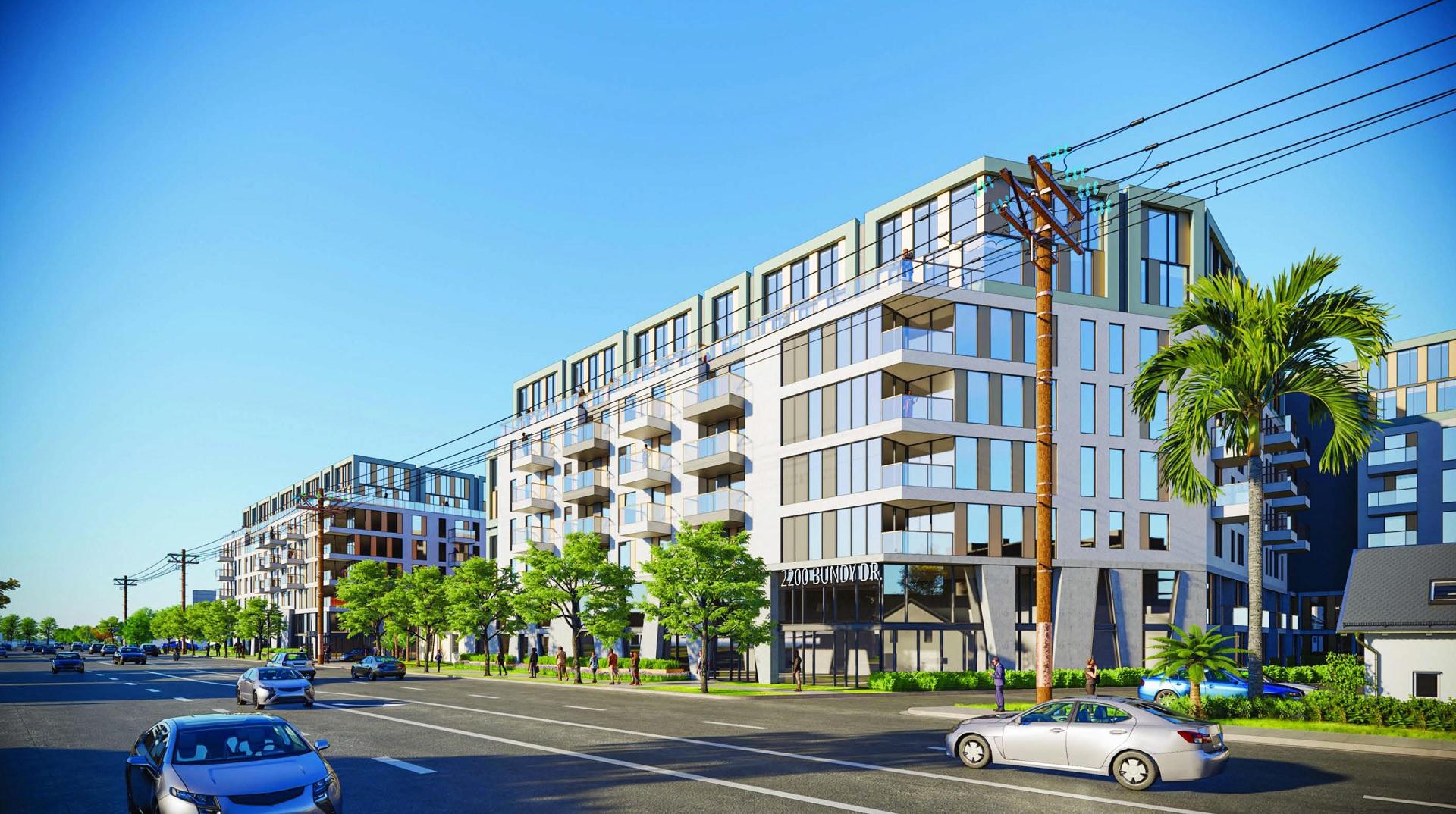
In the 1970s, renowned USC architecture professor Ralph Knowles developed a method for planning and designing cities that would dramatically reduce the use of fossil fuels, while retaining the qualities that people find most attractive and useful about cities: walking, biking, encountering people, using efficient public transportation.
The idea was to design and orient buildings to have the best exposure to the sun. This would provide light and heat when needed, and cooling shade at the appropriate times of the day. Applied to entire city blocks, the method ensured access to the sun by placing taller buildings in places that did not cast excessive shadows on other buildings. City blocks would have taller buildings along one side, and lower buildings on another.
With Knowles’ method, courtyards and shared open spaces within each block guarantee solar access to everyone. City blocks designed with this method–called the Solar Envelope–make sure that solar energy systems can access sunlight without the possibility of being shaded by future buildings nearby. Arranged this way, buildings and city blocks can provide healthy, human-scaled housing and commercial buildings, with heating and cooling costs reduced to near zero in our climate.
The challenge is that the Solar Envelope method, carefully attuned to strike a good balance between population density and access to sunlight, requires zoning and building code limits on how much development can occur on city blocks. Our stack-and-pack current zoning, in commercial and dense areas of the city, is designed to maximize the number of units built on each property without taking into account climatic considerations, such as solar access and shade.
A visit to Lincoln Boulevard and adjacent streets in downtown Santa Monica provides excellent examples of projects designed for optimal short-term economic returns, with little concern for climate other than code-required energy-efficiency measures. And these are merely band-aids on a much larger ecological problem.
Our colleague Ron Goldman often reminds us of the need for a comprehensive master plan for our city. Planning officials point to the LUCE (Land Use and Circulation Element) as the overarching master plan for the city [link: https://tinyurl.com/mu3jkmer]. But the document only deals with a limited set of ideas, focusing on transportation, housing and economic considerations, and a limited subset of environmental goals, including solar. But the plan does not describe a comprehensive effort to combine these ideas into a single guiding document that includes the actual physical design of city blocks in response to climate concerns. It does not discuss the protection of solar energy systems and the provision of shade where needed; all effective means to help reduce the city’s energy requirements to almost nothing, in many cases.
In a larger sense, the plan does not consider real, long-term environmental constraints that can affect every individual and family in the city. For example, on the topic of water, the LUCE calls for stormwater harvesting and recycling–laudable goals that have resulted in extremely successful efforts by the city in recent years, including planning for purifying sewer water as an additional source of potable water. But the plan does not envision a strategy when drought and development exceed the city’s ability to produce or recycle water in the required quantities.
That possibility is now in sight. The city has a goal to be fully independent of the state’s water system, which supplies about a third of the city’s water needs and is under severe and increasing climate-change pressure. But a Public Works staff report to City Council last June suggested that the State’s new housing requirements would cause the city to fall short of that goal [link: https://tinyurl.com/2p862b4p]. A real, comprehensive master plan would plan for that eventuality, and start orienting the city toward a drier, hotter future with fewer resources. This would include guidelines for the design of buildings and courtyard-enabled city blocks similar to the methods developed by Professor Knowles.
One problem is that development has become a battleground in the city for competing interests. The result is a focus on short-term political triumphs at the expense of long-term planning that acknowledges the specific, real challenges posed by climate change constraints.
For years, even decades, Santa Monica has staked a claim to municipal leadership, in housing, transportation, even information –many of us remember a previous City Manager’s sonorous announcement that “we’re a data-driven city.” Today’s reality is that the collapse of the foreign tourism industry, the retail apocalypse and the pandemic have paid put to many fantasies underpinning such claims to city leadership. If this is, in fact, a data-driven city, we must acknowledge the data that points toward ecological limits, even if it means doing away with some financial, technological and ideological illusions.
The buffers against reality have been stripped away. With Earth Day this week, it is time to focus on practical solutions to our very real, if rarely-admitted challenges. We can start by preparing a real, truly comprehensive master plan.
Daniel Jansenson, Architect, Building and Fire-Life Safety Commission, for S.M.art (Santa Monica Architects for a Responsible Tomorrow).
Thane Roberts, Architect, Robert H. Taylor AIA, Ron Goldman FAIA, Architect, Dan Jansenson, Architect, Building and Fire-Life Safety Commission, Samuel Tolkin Architect, Mario Fonda-Bonardi, AIA, Planning Commissioner, Marc Verville, CPA (inactive), Michael Jolly, AIR CRE. For previous articles see www.santamonicaarch.wordpress.com/writings.













